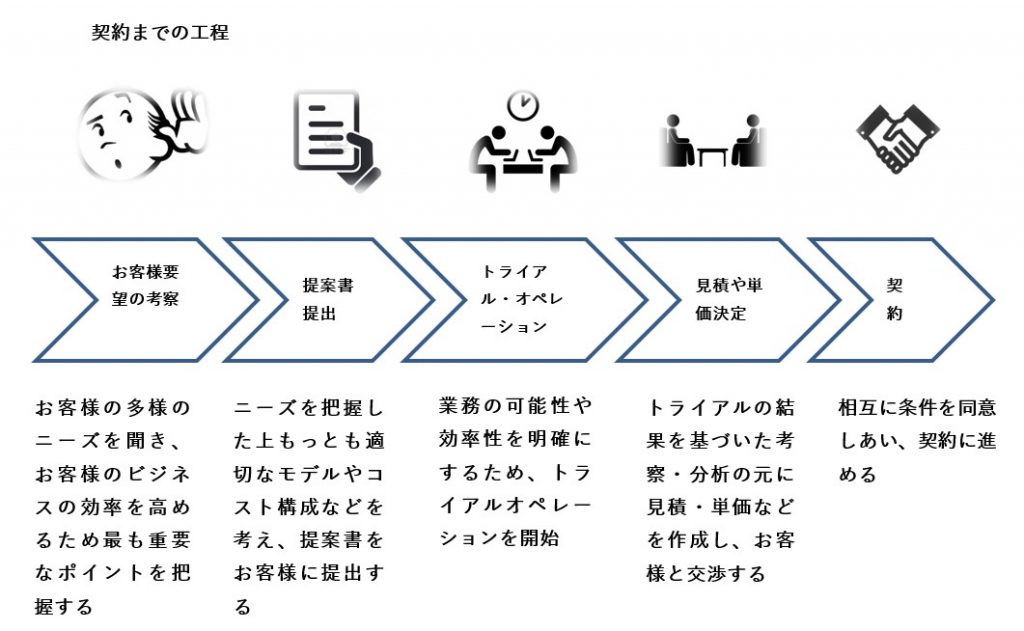Contact Info
- No1 E7, Truong Phat, Truong An, An Khanh, Hoai Duc, Ha Noi, Viet Nam
- (+84) 338 883 503
- Info@tgedu.vn

Business process outsourcing (BPO) is a business practice in which an organization contracts with an external service provider to perform an essential business function or task.
An organization typically contracts with another business for such services after it has identified a process that, although necessary for its operations, is not part of its core value proposition. This step requires a good understanding of the processes within the organization and strong business process management.
Many organizations consider processes that are performed the same or similarly from company to company, such as payroll and accounting, good candidates for BPO.
Because these commodity processes do not generally differentiate one organization from another, enterprise executives often determine there is little value in having their own staff perform them. Companies calculate that outsourcing these processes to a provider that specializes in them could deliver better results.
BPO has its roots in the manufacturing industry. Manufacturers hired third-party vendors to handle parts of their supply chains after determining that the vendors could bring more skills, speed and cost efficiencies to those processes than an in-house team could deliver. Over time, organizations in other industries adopted the practice.
Today, the use of BPO has expanded, with for-profit businesses, nonprofits and even government agencies outsourcing a range of tasks to service providers.
BPO has its roots in the manufacturing industry. Manufacturers hired third-party vendors to handle parts of their supply chains after determining that the vendors could bring more skills, speed and cost efficiencies to those processes than an in-house team could deliver. Over time, organizations in other industries adopted the practice.
Today, the use of BPO has expanded, with for-profit businesses, nonprofits and even government agencies outsourcing a range of tasks to service providers.
Enterprise executives opt to outsource a business process for a variety of reasons. Those reasons vary based on the type, age and size of the organization as well as market forces and economic conditions.
Startup companies, for example, often need to outsource back-office and front-office functions because they do not have the in-house resources to perform them.
An established company may opt to outsource a task that it had been performing after determining that a third-party service provider could do the job better or cheaper. Management experts advise enterprise executives to identify functions that can be outsourced and then determine if shifting that task to an outsourcing provider makes sense.
If so, the organization must go through the process of not only identifying the best vendor for the work, but also shifting the work from in-house to the external provider. This requires a significant amount of change management, as the move to an outsourced provider generally affects staff, established processes and existing workflows.
The shift to an outsourced provider also affects the organization's finances -- not only in terms of shifting costs from the internal function to the outsourced providers, but often in terms of corporate taxes and reporting requirements.
The organization may also need to invest in new technology to enable the smooth flow of work to the outsourced provider. The extent and cost of that technology depend on the scope of the function being outsourced and the maturity of the technology infrastructure in place at both enterprises.
This process typically starts with enterprise leaders identifying specific functions or business processes to outsource as a way to save money, gain flexibility, improve performance and redirect resources to its core business capabilities.
Business leaders then consider whether one vendor should handle all the work being outsourced or whether contracting multiple providers for the various tasks would deliver the best value. For example, a company could decide to outsource most of its HR functions and then either contract for a single provider to perform all the outsourced processes or it could hire one for payroll and another for benefits administration.
Benefits of BPO typically cited by proponents include the following:
• Financial benefits. BPO providers can often perform a business process at lower costs or save the company money in other ways, such as in tax savings.
• Improved flexibility. BPO contracts can offer the ability to modify how an outsourced business process is done, enabling companies to react more nimbly to changing market dynamics.
• Increased competitive advantage. BPO enables an organization to focus more of its resources on operations that distinguish it in the marketplace.
BPO risks include the following:
BPO risks include the following:
• Security breaches. The technology connection between the hiring company and the BPO provider creates another point of entry for bad actors, as organizations often need to share sensitive and regulated data with their service providers.
• Regulatory compliance requirements. An organization's regulatory requirements extend even to outsourced work, so it must ensure that the vendors it hires align with the laws the organization must follow and that the vendors adhere to the rules that govern the organization's outsourced work.
• Unanticipated or higher costs. Organizations can underestimate the amount of work that needs to be done, which can lead to higher costs than anticipated.
• Relationship challenges. Organizations can face communication problems with their outsourced providers, or they might find that there are cultural barriers.
• Overdependence on the external provider. An organization that outsources a function or service is tethered to the partner that performs the work. The organization must manage that relationship to ensure key objectives are met at the agreed-upon cost. If not, the organization may find it difficult to bring the operation back in-house or even move the contract to another outsourced provider.
• Increased potential for disruption. An organization must monitor for issues that could interrupt or permanently end the relationship with an outsourced provider. These include financial or workplace problems at the outsourced provider, geopolitical instability, natural disasters or changes in economic circumstances. Organizations must consider such risks and devise strategies on how to cope, which, in turn, adds complexity to their business continuity and disaster recovery.
BPO is often divided into the following types based on the service provider's location:
• Offshore outsourcing occurs when an organization contracts for services provided with a company in a foreign country.
• Onshore outsourcing, or domestic outsourcing, happens when an organization contracts for services provided by a company that operates in the same country as the hiring organization.
• Nearshore outsourcing is when an organization contracts for services provided by companies based in neighboring countries.
Business process outsourcing is sometimes categorized by the types of services being provided; the following three categories are commonly cited:
1. Knowledge process outsourcing (KPO) is when the outsourced service provider is hired not only for its capacity to perform a particular business process or function, but also to provide expertise around it.
2. Legal process outsourcing (LPO) is a type of KPO that is specific to legal services; these range from drafting legal documents and performing legal research to offering advice.
3. Research process outsourcing (RPO) -- another type of KPO -- refers to research and analysis functions; biotech companies, investment firms and marketing agencies are among the types of organizations that engage in RPO for services.
Enterprise executives should select BPO providers that can support their business objectives, as well as help them be more agile, flexible and innovative and, ultimately, more competitive. As such, organizations should consider more than just the price of a BPO contract when choosing a provider. They must also consider how well the provider can deliver on those other points, evaluating each provider to determine whether it has the following:
• an adequate understanding of the organization's business and industry;
• the capacity to meet current requirements, as well as to scale to meet future needs;
• an understanding and ability to meet compliance and regulatory requirements, as well as data privacy needs;
• reporting metrics to demonstrate it is delivering on contractual standards; and
• the geographical locations to meet business needs and regulatory requirements.

Business Process Outsourcing (BPO) is a term used to refer to the outsourcing of a partner to provide day-to-day management, billing, customer care services, data entry, etc. to give a business more time for its core business areas.
Recently, Vietnam has been consecutively rated as an attractive destination for Software Outsourcing.
According to a report by C&W, with lower salaries compared to neighboring countries in Southeast Asia, Vietnam has established itself as one of the most attractive off-shore destinations with best quality compared to cost.
Currently, there are about 1,000 software companies with more than 80,000 employees in Vietnam, and it is one of the largest software export markets in the world and the second largest software service trust market for Japanese partners.
In addition, with a young population and 1-1.5 million people entering the labor market every year, Vietnam has an abundant supply of human resources.
Our network of reputable BPO companies in Vietnam, with many years of practical experience, will also cooperate with Japanese customers to provide the following BPO services.
・Modeling service
Building model creation (design, structure, MEP in Revit)
Infrastructure model creation (Civil 3D, Revit for roads, bridges, …)
Family creation
・2D drawing creation service
(AutoCAD) Supports drawings in all fields such as architectural drawings and civil engineering drawings
・Add-in tool creation service for Revit, Naviswork, Civil 3D, Forge, …
・Work to convert CAD trace architectural drawings into CAD data
・CAD conversion/correction CAD data conversion/correction work
・CAD conversion/correction CAD data conversion/correction work
・ Digital album layout editing work:
The work of creating an album by designing the layout of the customer's JPEG file sent from the client by the editorial staff in Vietnam.
・Numeric input work:
Work to enter the number shown in the photo ・Work to enter bib numbers, etc. ・Tagging work
・Maker sorting work:
The task of sorting the maker of clothes etc. from JPEGs taken at sports competitions.
・ Event poster creation work:
Work to create a memorial poster based on JPEGs taken at various events such as soccer clubs, American football clubs, and music festivals. At the time of creation, work to design using a wide variety of functions such as trimming, cutting, resizing, color change, etc. using Photoshop
・Editing photos for publication in magazines and websites:
Work to trim, cut, resize, change colors, etc. using Photoshop for photos published in design magazines, mail order, etc.
・Business card input:
Convert to Excel data ・Enter 1 business card (name, title, phone number, address, email address, etc.)
・Seminar application form:
Excel data ・Enter 1 application (input of basic information such as name, phone number, address, and participation seminar selection information)
・ Mail order application form:
Excel data ・Enter 1 application (Enter basic information such as name, phone number, address, and application product number)
・Report creation:
Edit and analyze Excel and CSV data downloaded from the system, etc., create graphs and tables, and submit them regularly to each Japanese person in charge
・Qus Live Tracking
QUS Live Tracking (QUS Live Tracking) Direct Observation application allows you to visualize and track important parameters and movements in real-time during a running session by collecting data from BLE devices.
Programming Platforms: Laravel, NodeJS, MongoDB
・QUS Dashboard
The QUS Analytics platform allows users to not only rate their sessions, but also provide detailed analysis of various key parameters and movements for each athlete.
Programming Platform: Laravel, C++, MySQL
・QUS Sleep
The QUS Sleep app allows you to track your athlete's regeneration process. Additionally, the app monitors the scores and sleep of the entire team.
Programming Platforms: Laravel, MySQL, Python, C++
・QUS Coach
QUS Coach will help you shape it the way you want it. With guided training and training tips, you'll have all the resources you need to reach your goals.
・Soccer Load Calculator:
Soccer Load Calculator: An online tool that helps users effectively plan and manage soccer practice sessions.
・Soccer Load Calculator:
Soccer Load Calculator: An online tool that helps users effectively plan and manage soccer practice sessions.
・Codefactory chat-sytems
In order to work effectively with businesses, it is common today to use messaging tools to connect with each other.
Instead, buy or rent apps from sites like freelancer.com or upwork. However, the app is still underutilized and has limitations on task creation, working hours, and video calling in the browser.
Due to these deficiencies, the web chat application meets that requirement. We already have an app to connect to the chat browser. It is an application that allows users to connect to chat about their projects and has the features they need to complete their projects quickly and professionally. Webchat is a system that allows users to communicate in real time using an easily accessible web interface. It consists of collaborative project management conversations between developers and clients. Through associations, it helps users manage projects effectively and monitor work processes clearly and quickly by being easy and accessible to users with no time to install.
Programming platform: Nodejs, socketio, vuejs
